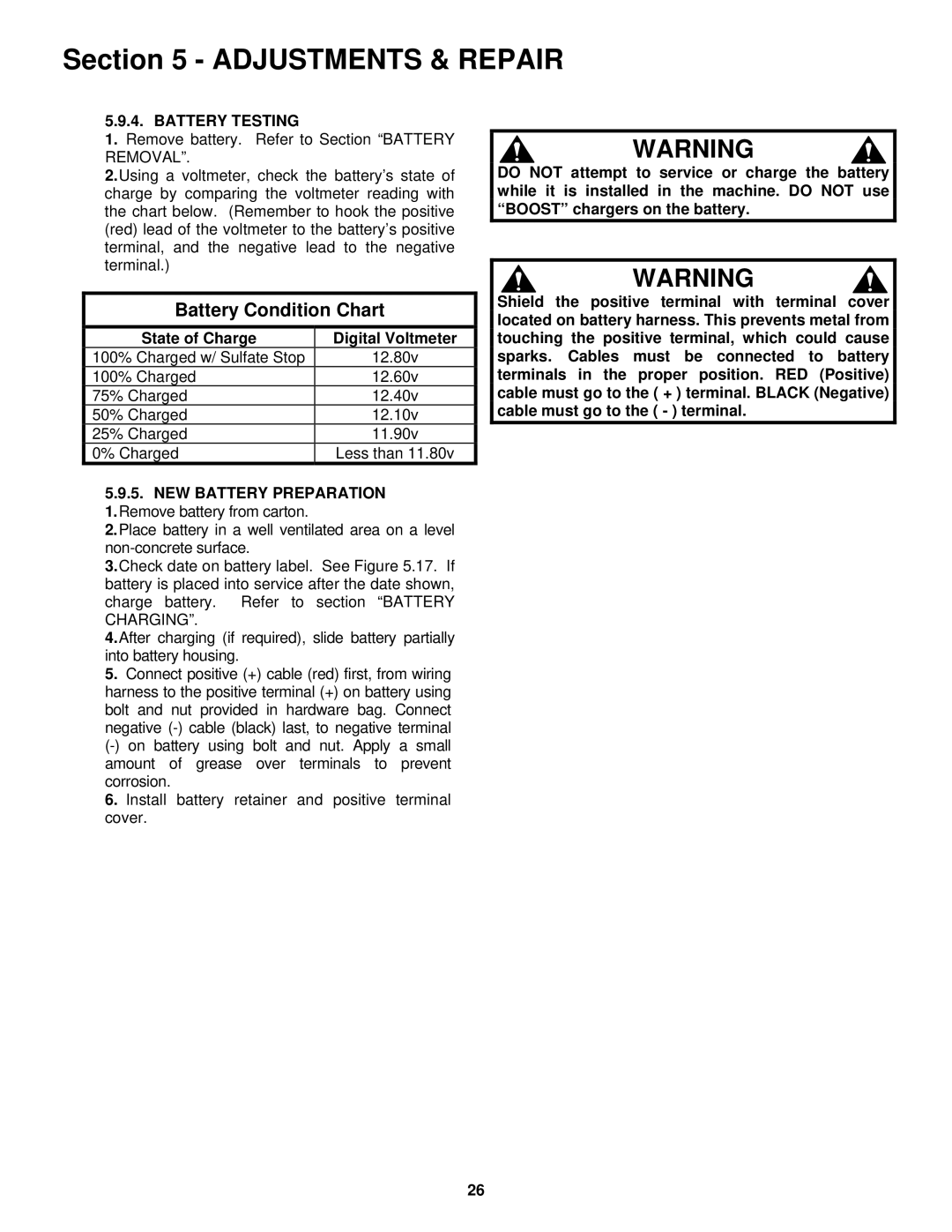
Section 5 - ADJUSTMENTS & REPAIR
5.9.4. BATTERY TESTING
1.Remove battery. Refer to Section “BATTERY REMOVAL”.
2.Using a voltmeter, check the battery’s state of charge by comparing the voltmeter reading with the chart below. (Remember to hook the positive (red) lead of the voltmeter to the battery’s positive terminal, and the negative lead to the negative terminal.)
Battery Condition Chart
State of Charge | Digital Voltmeter |
100% Charged w/ Sulfate Stop | 12.80v |
100% Charged | 12.60v |
75% Charged | 12.40v |
50% Charged | 12.10v |
25% Charged | 11.90v |
0% Charged | Less than 11.80v |
5.9.5.NEW BATTERY PREPARATION 1.Remove battery from carton.
2.Place battery in a well ventilated area on a level
3.Check date on battery label. See Figure 5.17. If battery is placed into service after the date shown, charge battery. Refer to section “BATTERY CHARGING”.
4.After charging (if required), slide battery partially into battery housing.
5. Connect positive (+) cable (red) first, from wiring harness to the positive terminal (+) on battery using bolt and nut provided in hardware bag. Connect negative
6. Install battery retainer and positive terminal cover.
WARNING
DO NOT attempt to service or charge the battery while it is installed in the machine. DO NOT use “BOOST” chargers on the battery.
WARNING
Shield the positive terminal with terminal cover located on battery harness. This prevents metal from touching the positive terminal, which could cause sparks. Cables must be connected to battery terminals in the proper position. RED (Positive) cable must go to the ( + ) terminal. BLACK (Negative) cable must go to the ( - ) terminal.
26
